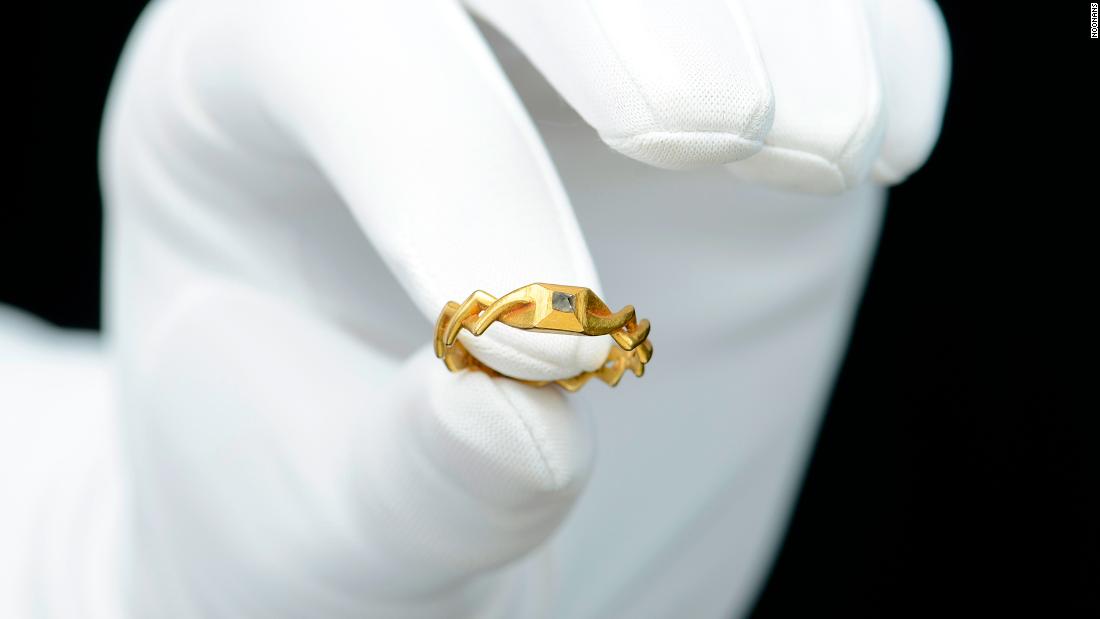
Now the item is expected to fetch between £30,000 and £40,000 ($35,500 and $47,300) when it goes on auction later this month.
Board called the ring “a once-in-a-lifetime” find.
During an interview with CNN, he said: “There will probably never be another one like it. Back then, each ring was individual and unique, not mass produced like today. It’s stunning.”
Board took up metal detecting again in 2019. During the second day of a field search, he had almost given up when he got a signal on his metal detector by a footpath.
Initially, the culprit looked like a sweet wrapper but Board soon realized that it was a gold ring.
When he dug it up all covered in mud, Board said he thought it was just “scrap metal” and popped it into his pocket.
“It was once I got home and washed it off that we realized it was a lot better than we thought,” he explained.

The interior inscription reads “I hold your faith, hold mine,” in French. Credit: Noonans
The ring is in “almost perfect condition,” Nigel Mills, a consultant in coins and antiquities at Noonans, said in the release. The jewelery has a golden hoop of two entwined bands to symbolize marital union and an inverted diamond set into it.
Inside the band is a medieval French inscription that reads, “Ieo vos tien foi tenes le moy,” translating as, “I hold your faith, hold mine,” according to the auction house.
Due to the location of the find and the quality of the ring, Noonans’ experts surmised that it’s the wedding ring of Joan Brook, given to her by her husband, Thomas Brook.
Their marriage in 1388 brought great wealth to the Brook family, the release said, as Joan was the widow of Robert Cheddar, a wealthy cloth merchant and twice mayor of Bristol — a city in western England.
Now known as The Lady Brook Medieval diamond ring, the item will be auctioned on November 29.
Board goes out three times a week, weather permitting, in hope of uncovering another great relic among the musket balls and King George I coins.
“It will be amazing if I did,” he responded, adding “you never know what the next signal is going to bring.”
The discovery adds to a list of incredible finds by detectorists in the UK.
